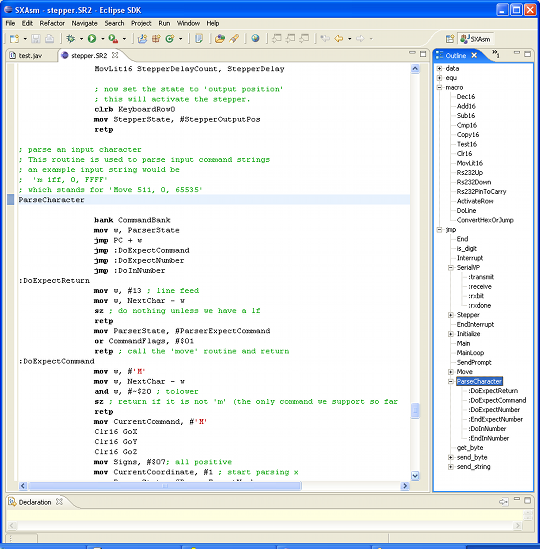Eclipse plugin for SX assembly language
From Just in Time
Reasons to create another SX-ide
- I'm planning a move from Windows to Linux and want to keep on writing SX assembly programs
- Being used to high-level language IDEs, I very much miss some features in SXKey, like overview windows, bookmarks, being able to paste into the find-dialog, etc.
- I'm new to both Java and Eclipse, so I thought creating an eclipse-plugin would be a nice challenge…
Status
- After Installing the latest Eclipse version (Europe), my plugin does not run anymore. Neither does it allow me to debug in any useful way
- Syntax highlighting finished
- Outline partially done
- need to implement update-as-you-type (reconciler). Currently the outline is only created when you load the file, which is of limited use…
recognize local labelsseparate jump, macro, and EQU-labels
- Content assist: still deciding whether it's needed. Would be cool though...
- tool chain: see sx assembler
- Somebody is/was working on a tool chain, see this thread on the parallax SX forum
- this anouncement of an open source SX28 emulator would be relevant as well.
- I still have to figure out how to wrap this into a nice distributable package.
See also
- sxgo - sx simulator
